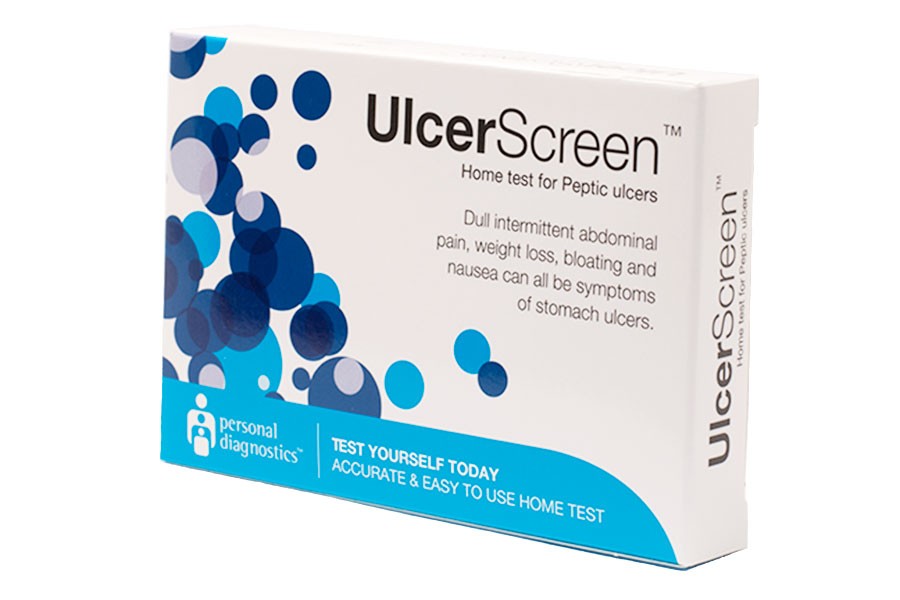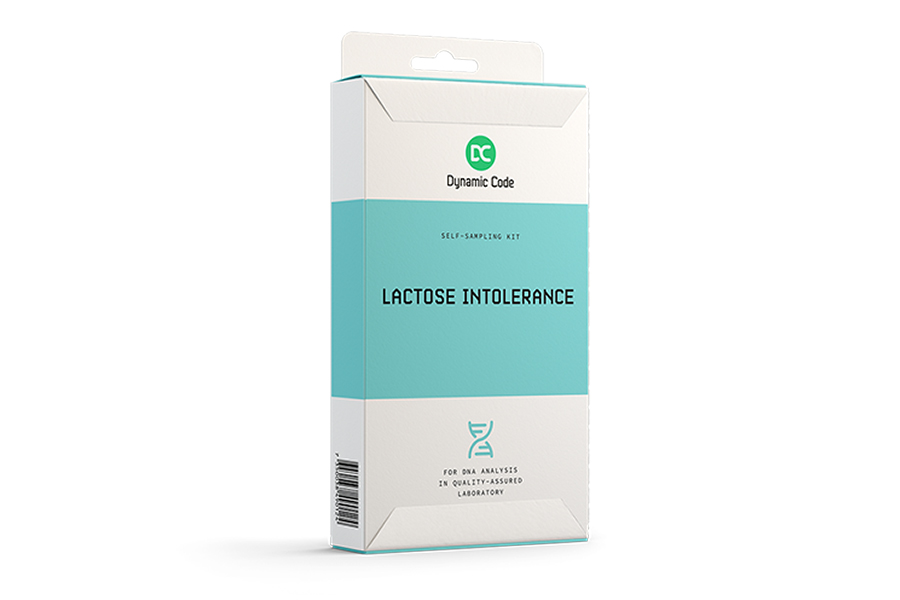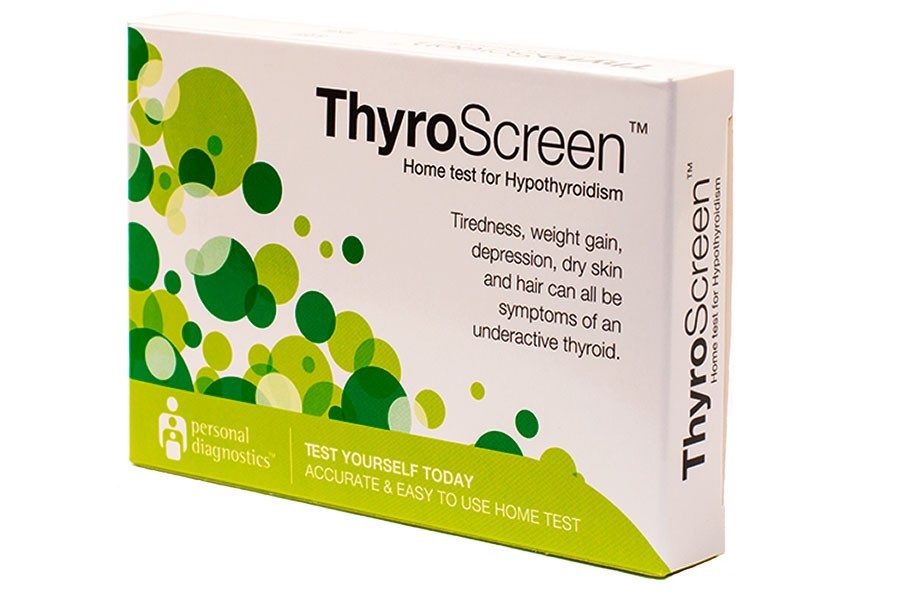
UlcerScreen
Home Test Kit for Stomach Ulcers
UlcerScreen™ is a home test that detects the antibodies to Helicobacter pylori associated with Peptic Ulcers.
UlcerScreen
Check for Peptic Ulcers in just 10 minutes with our accurate, easy to use home test!
Peptic ulcers occur in the stomach and duodenum and in up to 90% of cases, they are due to an infection by the bacteria Helicobacter pylori (H. pylori). The infection causes inflammation and acid erosion of the lining of the stomach to form ulcers that can result in anaemia and other serious side effects if untreated. UlcerScreen identifies IgG antibodies to H.pylori that result from the infection and indicate the presence of stomach and/or duodenal ulcers currently or in the recent past.
The UlcerScreen test kit has been designed for use a home and no previous experience or training is necessary. The test takes just 10 minutes. A small finger-prick blood sample is taken with a sterile lancet provided in the kit. The blood sample is then transferred to the UlcerScreen™ test cassette using the micropipette provided, and after the addition of six drops of buffer solution the result is shown in 10 minutes. A positive result is given if IgG antibodies to H.pylori are detected.
The summary below shows you how easy it is to take your finger-prick blood sample, run the test and then interpret your results.
Everything you need to perform the test is provided in the kit:
- Easy to follow, step-by-step instructions
- A test cassette and diluent dropper bottle
- Two sterile lancets and micropipettes (a spare one of each is included)
- An alcohol swab to sterilise your finger
About Stomach Ulcers
A peptic ulcer is a sore on the lining of the stomach or duodenum, the beginning of the small intestine. A peptic ulcer may also develop just above the stomach in the oesophagus, although this is far less common. A peptic ulcer in the stomach is called a gastric or stomach ulcer, whilst those that occur in the duodenum are called duodenal ulcers. It is possible to have both gastric and duodenal ulcers at the same time, and more than once in a lifetime.
A bacterium called Helicobacter pylori (H. pylori) is a major cause of peptic ulcers. H.pylori is one of the most common infections in the UK. More than 25% of people become infected with H. pylori at some stage in their life. Once you are infected, it usually stays with you for the rest of your life, unless treated. About 15% of people who are infected with H. pylori go on to develop peptic ulcers, and although they can affect people of any age they are most common in women and men over the age of 60.
The most common symptom of both duodenal and stomach ulcers is abdominal discomfort including;
- a dull or burning pain
- particularly occurs between meals or during the night
- may be briefly relieved by eating food or by taking antacids
- lasts for periods of minutes to hours and comes and goes for several days or weeks
Other symptoms can include:
- weight loss
- poor appetite
- bloating and burping
- nausea and vomiting
An infection with H.pylori can be easily treated so if you have these symptoms UlcerScreen® can help in identifying their cause.
UlcerScreen – Frequently Asked Questions
How does UlcerScreen™ work?
When the bacterium H.pylori is present in the gastric epithelium specific antibodies are produced by the immune system. UlcerScreen™ specifically detects these anti H.pylori antibodies in blood and therefore shows the presence of the bacteria.
When should you use UlcerScreen™?
The UlcerScreen™ test should be performed if you have repeated stomach or intestinal pains (stomach ache, acidic, reflux etc.). The test can be performed at any time of the day.
How accurate is UlcerScreen™?
The test results are accurate as long as the instructions are followed very carefully. However if the UlcerScreen™ test cassette gets wet before performing the test or if the volume of blood added to the sample well is incorrect, the accuracy of the test can be affected. The pipette provided in the kit is marked to show when the correct volume of blood has been collected. If used correctly studies have shown UlcerScreen™ has an accuracy of over 90% compared to reference methods.
How to interpret the test if the colour and intensity of the lines are different?
The colour and intensity of the test lines are of no importance in the interpretation of the result. The lines only need to be uniform and clearly visible and a line of any colour intensity by the 'Test' mark should be regarded as positive.
Are there any instruction videos that would help me to use the test components properly?
Yes, if you are unsure as to how use the lancets or micropipettes provided in the kit we recommend that you watch the manufacturer's instruction videos. To view these short videos on how to use the lancets please go to Unistick 3, and for the micropipettes, please got to Microsafe.
What is the purpose of the line under the mark C on the cassette for?
This is a test control and when this line appears it means that the test has performed correctly.
If I read the result after 15 minutes, will the result still be valid?
No, the result should be read within 10 minutes of adding the test diluent and is reliable only up to 15 minutes.
What should I do if the test result is positive?
If the UlcerScreen™ test result is positive it means that anti-H. pylori antibodies are present in blood. We would recommend that you should seek medical advice from your doctor who will decide if further investigation should be performed as the anti-H. pylori antibodies could be due a to previous infection that has already been treated.
What should I do if the test result is negative?
If the test result is negative, it means that the test could not detect anti-H. pylori antibodies in blood sample. However, as no test is 100% effective we would recommend that you consult your doctor if your stomach ache, gastric reflux or other worrying symptoms persist.
Latest Reviews
Blood test procedure steps
.png)
1Simply take a finger-prick blood sample.
.png)
2Add drops of blood to the test cassette.
-(1).png)
3Then add test buffer solution.
-(1).png)
4Wait a few minutes and read your test result.


